#Composting
Text
1K notes
·
View notes
Text
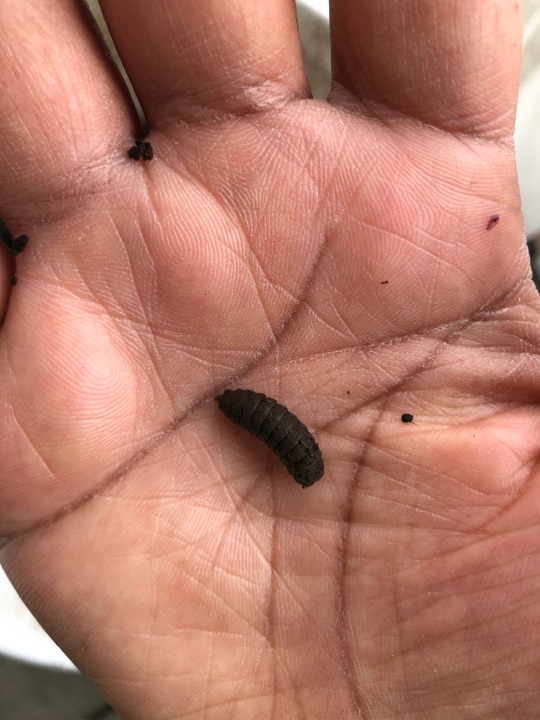
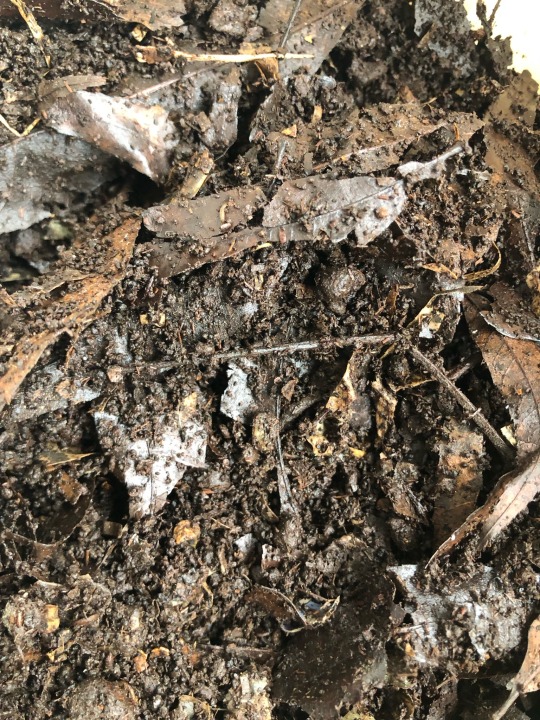
I love how my compost keeps them safe and warm.
181 notes
·
View notes
Text
The new 'compost obligatoire' rules came into force on 1 January 2024. Here's what they entail.
As of 1 January 2024, organic waste recycling is mandatory in France under new 'compost obligatoire' rules.
With support from the government’s Green Fund, municipalities must provide residents with ways to sort bio-waste, which includes food scraps, vegetable peels, expired food and garden waste.
Households and businesses are required to dispose of organic matter either in a dedicated small bin for home collection or at a municipal collection point. Previously, only those who generated over five tonnes of organic waste per year were required to separate it.
The waste will then be turned into biogas or compost to replace chemical fertilisers. Alternatively, it can be composted at home.
The obligation is currently on local authorities to provide an easy means for households to compost or separate organic waste.
While facilities are rolled out, there will not be fines imposed for non-compliance. It is yet to be seen whether stricter rules will be imposed in future.
One-third of household waste is bio-waste
Organic waste from food and gardens accounts for almost one-third of household waste. When it is mixed with other rubbish, it typically ends up in landfills or incinerators, where it produces heat-trapping greenhouse gases like methane and CO2.
Food waste is responsible for about 16 per cent of the total emissions from the EU food system, according to the European Commission. Globally, food loss and waste generates around 8 per cent of all human-caused emissions annually, the UN says.
It can also contaminate packaging destined for recycling like paper, plastic and glass.
In 2018, only 34 per cent of the EU’s total bio-waste was collected, leaving 40 million tonnes of potential soil nutrients to be discarded, according to NGO Zero Waste Europe.
In France, an estimated 82 kg of compostable waste per person is thrown away each year.
Is bio-waste separation mandatory in other European countries?
Under the EU’s Waste Framework Directive, bio-waste collection is being encouraged this year, but it stops short of setting mandatory targets.
In many European countries, organic waste separation has already been implemented at the municipal level.
Milan in Italy has been running a residential food waste collection programme since 2014. Households were given dedicated bins and compostable bags to kick off the scheme.
Elsewhere, taxes or bans on incinerating bio-waste have encouraged similar schemes, with separate bins and home composting widespread in Austria, the Netherlands and Belgium.
The UK announced plans to roll out separate food waste collection in 2023. It remains voluntary for households in England, but is more strictly enforced in Wales and for business owners.
How to sort your bio-waste
Ideally, all waste - including organic matter - should be kept to a minimum.
This can be achieved through careful meal planning. Consuming, freezing or preserving food before it expires along with using every part of an ingredient also help to reduce waste. Some food waste can even be repurposed into animal feed.
Any food waste that cannot be saved or repurposed should be either composted or separated for collection. This includes uneaten food scraps, baked goods, dairy products, eggshells, fruit and vegetables and their peels, mouldy food, pet food, raw and cooked meat and fish, bones, tea and coffee grounds.
Liquids, non-food products and packaging should not be placed in bio-waste bins.
-via EuroNews.Green, January 2, 2024
#france#composting#eu#european union#organic waste#biofuels#recycling#sustainability#food#food waste#compost#carbon dioxide#carbon emissions#sustainable living#good news#hope
175 notes
·
View notes
Text
Lately I've been pleased whenever I find a way to make use of something that would otherwise get thrown away; for instance, I learned that you can use scrunched-up aluminium foil to scrub pans and pots, instead of that ball of wire you can buy!
The walnuts that you can't completely clean out of shells, are a great bird snack, who can get their beaks in there. Fruit that is starting to go bad/already has gone bad, is a great food for butterflies. Any food that's starting to get rotten can be a great addition to a compost pile and a snack for any worm. Citrus peels can be used to infuse vinegar to make nice-smelling cleaning solution. Or they can be made into sugared candy! Lemon slices that make a great winter decoration, can be used as a halloween decoration later when they turn black. Any small carboard box you have can be used for organizing, and if you have a big one, you can put a wooden board on it and create a little shelf to put plants on! An old cracked aquarium can be used as a little greenhouse, or an extra shelf on top of a surface. Old newspapers and old clothing can be cut into strips or tubes, and weaved into baskets. Old paper egg cartons can be soaked, blended and then turned into paper. Any plastic container can get a hole at the bottom and grow a plant in it.
Please tell me more things that you know how to reuse that would otherwise just be thrown away! I want more of this knowledge.
153 notes
·
View notes
Text
Easy zero waste tip no. 3: Know your R's
Refuse: If you don't acquire the thing that will become waste in the first place, it won't produce further waste. Simple enough. Refuse that which you do not need. Example: All that cute stuff on that Buzzfeed article? You don't need it. Don't even click the link.
Reduce: If you need something, get the minimum. Note that this doesn't mean the cheapest option- it means the most effective and environmentally friendly option. Example: Instead of buying disposable razors, or a razor with changeable heads, try out a safety razor. Instead of using plastic toothbrushes, try out bamboo, and instead of toothpaste in disposable tubes, try out some toothpaste bits. Instead of buying chicken breasts for one thing and chicken broth for another, get a whole chicken and learn to butcher its meat, and make broth from the skin and bones.
Reuse: This means both being mindful of purchases, so you're only buying things that are reusable whenever possible (Example: use beeswax wrap instead of saran wrap), and repurposing things you've already bought (Example: use those little Oui yogurt containers to start seeds for your garden).
Recycle: Find out what your local recycling program actually recycles, and be mindful. Aluminum is a safe bet most of the time, as is paper/cardboard; but plastics, most of the time, are a dud, so try to refuse, reduce, and reuse plastic whenever possible so you don't even need to worry about recycling it. This also refers to donation- that's another valid way to recycle things!
Rot: If you have a yard, start a compost pile! Just try to get a 50/50 balance of food scraps to brown matter (paper, dry leaves, etc). If you have a freezer, you can stick a container in there to act as a compost thing until you can bring it to a compost facility, such as a local garden, or farm. If you don't have the ability to do either of these things, then you can see if there's a subscription compost service in your area (I used CompostNow for ages, they're great).
Understanding these five principles, and looking at them in this order, can make things easier. Next time you're buying something, or about to throw something away, consider which of these might allow you to reduce your waste output in the future.
#zero waste#sustainability#anti consumerism#anti consumption#eco friendly#sustainable#environment#five r's#refuse reduce reuse recycle rot#reduce reuse recycle#recycle#ecofriendly#recycling#compost#composting
178 notes
·
View notes
Text
Supporting Your Plants for Cheap
This is my fifth post in a series I'll be making on how to increase biodiversity on a budget! I’m not an expert--just an enthusiast--but I hope something you find here helps!
Once you start gardening, you’ll find a lot of things go into it, and it can be a bit daunting to think about--especially if you’re trying to keep things low-cost. Fortunately, it doesn’t have to be as hard--or as expensive--as it initially appears.
Composting
There’s several different ways to compost, any of which are helpful indirecting food waste and nutrients out of landfills and into your soil--which in and of itself can help increase biodiversity by making the space more livable for microorganisms and insects, which then cycles around to the rest of the habitat.
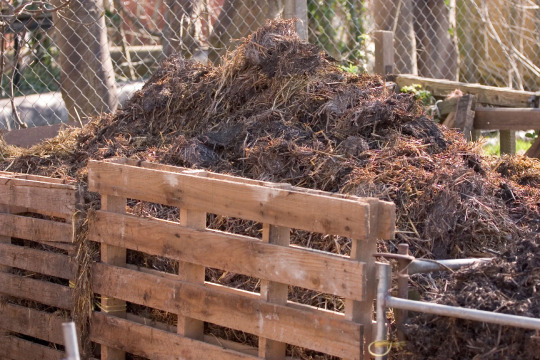
The classic one you see is hot composting. Most of the time, when I see hot composting set ups online, or hear people talking about them, it’s like listening to a wizard cast an intricate spell and prattle on about ratios and temperatures and special ingredients while standing over a detailed self-built setup made of the finest wood money can buy. Fortunately, it doesn’t have to be complicated. First off, there’s lots of ways to make compost bins--some can be more expensive than others, but there’s definitely options asides from buying pre-made tumblers or getting an engineering degree. I’ve seen people use metal trash cans dug into the ground, make compost pile setups out of old pallets, or just pile stuff up and leave it. While using different ratios of certain items can help them decompose faster, it’s ultimately not something you need to worry about a lot. If it can break down, it’ll break down--it just might take awhile. Composting this way can also help provide habitat--some insects like bumblebees have been known to make nests in compost heaps. In addition, it provides a robust ecosystem for decomposers like worms and other organisms, and bats and birds will be attracted to open-top piles to eat flying bugs that live off the compost. Amphibians enjoy them for humidity, warmth, and feasting on insects. Do note that sometimes snakes may also rest in and lay eggs in compost heaps, so be careful when turning them.
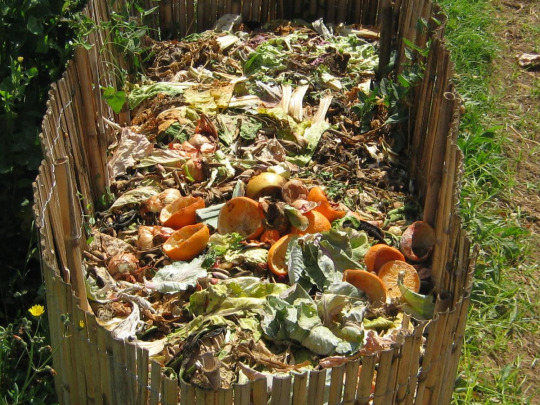
Do note, though, that if your compost pile looks like that you're getting roaches and rats and raccoons out of your goddamn mind. Bury the food scraps.
Personally, when I compost, I use a worm bin--they’re a fantastic option for limited space and limiting smells. I keep mine outside in a big rubbermaid tote with holes drilled into the bottom, sides, and lid. I put a layer or two of weed block on the inside, so it’s still able to drain but keeps the worms from trying to escape during rainy days. There is an initial cost of buying the worms, getting enough bedding materials, and getting a new bin if you don’t have an old one suitable for use. But with occasional feeding, it should sustain itself and provide valuable worm castings that can be used in the garden. Please do note, however, that earthworms are considered invasive in some places.

Look at that worm bin-y goodness. This is a pic of my bin, from earlier this month!
Though I’ve never done it, I’ve heard of people having good results with bokashi composting--a method that’s done in a bucket, and is relatively easy to do indoors.

Once you start a composting system, keeping it stockpiled with organic material can become pretty easy for cheap. In general, if it comes from a plant, it’s safe to use. It’s also a good idea to avoid putting already-cooked things in a pile, as salts and sauces can kill beneficial bacteria in the compost while also attracting animals. Adding meat is also generally avoided to not attract animals. But below are some things that I’ve put in my worm bin quick, easy, and cheaply; or things I’ve seen friends put in their compost piles.
Cooking scraps/snack leftovers--things like cut up bell peppers, the ends of tomatoes, strawberry tops, apple cores, watermelon rinds, coffee grounds, and orange peels are amassed somewhat quickly in my house--my dad likes to cook. Around holidays like Thanksgiving and Christmas? Corn husks, potato peels, sweet potato fibers, leftover greens and other trimmings are a feast for compost piles and worm bins.
Vegetables and Stuff that went bad in the fridge/pantry--we’re constantly victims of the ‘forgot it was there’ conundrum. Fridge cleanouts are great times to decide what can be tossed to the compost--moldy bell peppers, spotty celery, questionable carrots, onion halves, old eggs, bagged salads, and stale/moldy bread have all been tossed into the pile before!
Grass clippings--though my worms don’t like grass clippings, they’re still great material for a classic hot compost set-up!
Fallen leaves--another classic addition to a hot compost pile. Some friends keep them stocked up and stored for later use.
Plant trimmings--what is plant clean up if not compost material? I’ve put cleaned-out sunflower heads and stalks in my worm bin, and they decomposed after about two months. If you get blossom end rot on your tomatoes or peppers, they’re still fair game for the bin as well!
Shredded mail--just make sure to not put in the thin plastic that covers the address section on some envelopes. Otherwise? As long as the paper isn’t glossy, it should be great for a bin or pile! Shredded paper or cardboard also makes great bedding for worm bins. Put those Amazon boxes to good use!
Pumpkins! Snag your neighbor’s halloween pumpkins in November and toss them in my compost! Last year my dad went around the cul-de-sac and nabbed all of the post-halloween pumpkins, the worms loved it.
Christmas tree needles--can’t confirm I’ve tried this, but it seems like it would work.
Mulch
Mulch is an excellent way to keep your soil moist, while also beginning and continuing to improve soil conditions as it breaks down into organic matter. You’ll have to water less, and it’ll prevent/slow down the growth of unwanted weeds (which is always the final straw to gardening for me, I get so overwhelmed I just stop going outside). Win-win situation, right? Except stepping into a Home Depot and finding mulch being sold for five dollars per square foot and knowing you have to cover a whole garden with it all can add up… pretty quickly, to say the least.
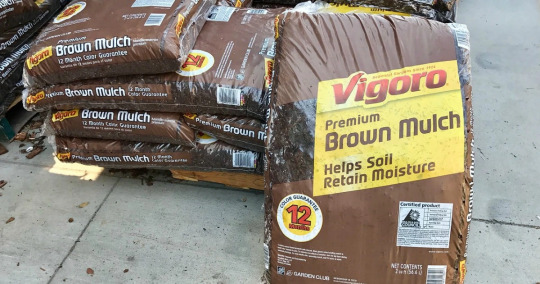
Fortunately, there are a few solutions to this, and likely from your own backyard!
Grass clippings are the first that come to mind. If you’re mowing your lawn, or have neighbors who are, collecting the clippings and spreading them over your soil is a cheap and easy option for some quick mulch. It’ll be very nitrogen-heavy, so keep that in mind, but it’ll still prevent weeds, retain moisture, and break down into organic material over the course of a few months. Do try to not use grass clippings you know are treated with pesticides, since the aim is to use this mulch to help increase your biodiversity, and having insects around plays a big role in that.

Fallen leaves are the next that comes to mind. If you’ve got a tree in your yard, or in your neighborhood, then you or someone around you knows the neverending avalanche of leaves or pine needles that drop come fall. As mentioned before, they can be used to make brush piles for creatures, or added into compost, but they have a fantastic third use as mulch. Add them on top of your beds!
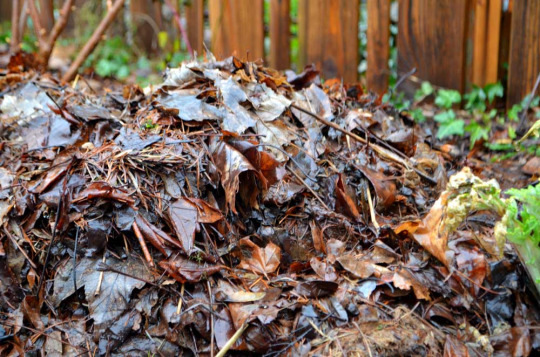
Want free wood mulch? A program called Chip Drop might be the best solution for you! They team up with arborists to find cheap drop sites for shredded wood, logs, etc. that are produced as they maintain trees! If any local arborists tied to the program are operating in your area, instead of paying to dump the resulting mulch at a landfill or some other dumpside, they’ll simply dump it at your place! Now, you won’t be able to control when the mulch gets dropped--I’ve heard of people coming home from work one day to find a chip drop in their driveway. But… free mulch!
Want wood chips but not a whole truck load? If an arborist is working in your area, and you can muster the courage, its worth a shot to ask! One time someone in my neighborhood was getting a tree removed, so my Dad and I parked near their car with a tarp in the trunk, some shovels, and an old storage bin. We approached nicely and asked if we could have some chips, and they were totally cool with it! At that point, how much you get depends on how big your trunk space is, and how many times you’re willing to ferry mulch back and forth out of your car so you can go back for more. But it is an option! Alternatively, you can ask them to dump the whole load in front of your house, but at least you’ll know when and where it’s happening!
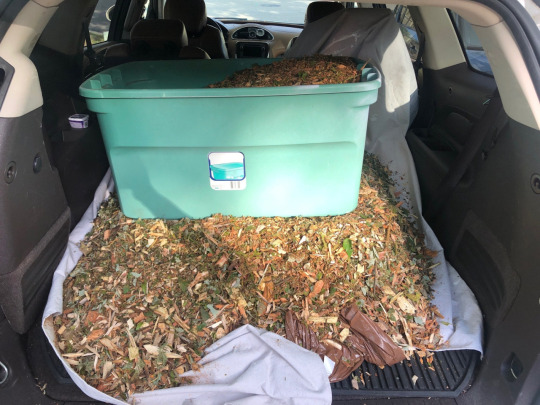
Trellises
Many plants need, or will appreciate, some kind of climbing structure. But trellises aren’t often cheap to find. To that, I say--we’ll create our own!

One popular option is to grow taller plants, and then plant climbing species are few weeks/years later so they’ll climb the taller plants! I’ve planted passion vine near a tree in my garden for it to climb, and I’ve seen people do similar concepts with sunflowers, corn, and other such plants! Sunflower stalks can provide support even after they’ve been cut back.
A combination of wood, some stakes, some nails, and some string can create a great frame trellis that can be used for beans, tomatoes, vines, etc--so I’m sure if could be put to good use for native climbers, especially since my dad’s used this structure for passion vines before. You may have to replace the string every year, but most of the time, the string is compostable anyways!
This may take a bit more setup and have a more upfront cost, but creating a trellis out of cattle panels makes a durable structure that can support all kinds of vining plants!

Of course, there’s always the easy alternative of simply letting plants climb along your fence! This is especially easy if you have a chain link fence, but wooden fences are plenty suitable for some species as well! I’ve seen passion vines do great growing along chain link fences as supports, and one of my favorite sights as a kid was always seeing bushels of trumpet vines growing up and over fences on the drive home.
Why are we worrying about trellises? Creatures are attracted to diverse landscapes with a variety of plants within them, so having a few climbers can be a great way to attract more wildlife! I know some plants in my area that pollinators are attracted to, or even rely on as host plants, are climbers that can get upwards of 15 feet tall, and will climb any surface you give them. A trellis provides you a great place to put extremely beneficial plants.
That's the end of this post! My next post is gonna be about how different 'kinds' of plants can all be beneficial in a biodiversity standpoint. Until then, I hope this advice was helpful! Feel free to reply with any questions, your success stories, or anything you think I may have forgotten to add in!
#biodiversity#solarpunk#gardening#outdoor gardening#composting#mulch#trellis#budget gardening#cheap gardening#ani rambles#out of queue#the biodiversity saga#i remember junior year of college me and my friends considered doing a cattle panel trellis#but then we couldn't figure out where to buy cattle panel#apparently the answer is 'tractor/farmer supply companies'#also so anyone reading these tags knows what took me 5+ years to learn#CATTLE PANEL DOESNT COME IN ROLLS IT COMES IN LENGTHS#all this time I was like 'man i wanna make a cattle panel trellis but it comes in like 40 foot lengths and i dont need that much'#and all my gardening homies were confused because theyve been getting it in lengths THIS WHOLE TIME#I WAS LOOKING AT FUCKIN ROLLED FENCING#i actually dont think any of the big box stores by me even fuckin sell cattle panel but thats beside the point#you can get it delivered though#(Delivered to the store for pickup i think)#someday i want a cattle panel trellis with like moonflowers or trumpet vine just a BURST of color and life
289 notes
·
View notes
Text

Finished compost sifter! The sifter box rides on the conduit rails with pvc bushings.
After you’ve sifted your soils or compost, the sifter flips to the side to empty!
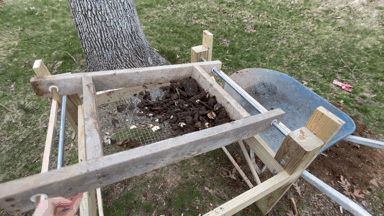
This was a lot of fun and I’ve already got a list of changes I’d make for version 2.0. All materials used except for the galvanized carriage bolts connecting the legs to the frame were scrap or free. Suggestions for improvement are welcome.
71 notes
·
View notes
Text
compost piles are wonderful
I give: some time, my garbage
I receive: cute bugs and isopods, great soil, silly worms, and accidentally germinating food scraps (I always plant them)
I just love how I can put some plant waste out to make good soil and all these little creatures go "I can help!"
it makes me happy, my plants happy, bugs happy, worms happy, so wonderful
what a joyous thing :)
58 notes
·
View notes
Text
lettin it swang at the farmers market
lettin my nuts hang at the local honey purveyor
jigglin dem thangs at the fish monger
slangin dat u already kno at the lavender stall
bumper crop when i air the gurls out
sustainable compostin wit dat meat out
got dat ruffage peekin out the canvas tote
107 notes
·
View notes
Text
A wizard that uses a stiffen and harden spell on his earthworm familiar to use it as his magic staff. He turns it to have its mouth face the ground and he automatically gains an immense burrowing speed, plus a fantastic source of nutrient rich fertilizer.
#wizard#wizardposting#wizard shit#wizardblogging#wizardblr#d&d#dnd#familiar#worms#earthworm#make up a guy#character idea#composting
180 notes
·
View notes
Text
how do i get more people interested in composting?
i work very part-time for a small composting service in my area in NH. we provide buckets for people to place compostable things in, pick those buckets up, and bring them to a local composting facility. we offer this to individual people as well as businesses.
for individuals, there are a few different monthly rates based on the level of service someone chooses. for businesses though, we work to create individual quotes based off each business's specific needs. from what i can tell, our struggle to get more businesses to work with us is not about our price. instead, there just seems to be a genuine lack of interest when it comes to composting and reducing landfill waste.
i have been tasked with trying to brainstorm ways to drum up interest around composting, but i admit that i am struggling. how can i help a business owner (especially a restaurant) start to consider composting as an important thing to do?
81 notes
·
View notes
Text

i made this infographic for a school project but please feel free to use it!! not necessary but if you would like to credit me my name is Tatum St. James :3
(note: everyone will tell you something different about weeds that have gone to seed. a good general rule is if you're doubtful about anything, just don't put it in!)
136 notes
·
View notes
Text
youtube
When you put Republicans in total control of a state, here's what happens after they've banned books, banned abortion, and persecuted the LGBTQ+ community.
The Idaho legislature, with GOP supermajorities, is taking up a bill dealing with cannibalism. The bill was proposed by Republican (of course) State Rep. Heather Scott who was motivated by a satirical Tik-Tok video which she took to be real.
A preoccupation of mine is that we need to pay much more attention to state government and especially state legislatures. Check now to see who represents you in your state legislature.
Find Your Legislators
Look your legislators up by address or use your current location.
If you are represented by a brainless MAGA Republican like Heather Scott, contact your state or county Democratic Party and ask how you can help elect more Democrats to the legislature.
#idaho#republicans#cannibalism#wingnuts#heather scott#idaho hb 522#composting#fameless#state government#state legislatures#vote blue no matter who#election 2024
45 notes
·
View notes
Text
What'll happen if I just...put my food scraps in a random container right now and gradually turn it into a more proper compost thing? How quickly will I need to do something else to it to have it become something vaguely useful?
Unnecessary info: I always hate throwing food scraps away, but today I had such a nice experience eating berries outside and when I walked around outside I actually felt positive feelings which hasn't happened really at all recently? So it felt so incorrect to walk away without at least returning the remnants to nature rather than chucking them in the trash. But I don't have the materials or executive function to do anything besides....Put It Somewhere. I thought about putting it in one of the random plants outside, but it feels questionable to just shove my food scraps in someone else's plants. Idk how you're choosing to raise your plants, idek if something bad could happen. Maybe the lemon tree, since it's already got lemons on the ground around it, but again, it's still Not Mine and very much Is Someone Else's. Whatever I end up doing, it'll probably need to be contained to a....container, and a pretty small (and definitely cheap) one at that, because I'm renting a room here, it's functionally Not My Yard, and the yard is 92% concrete. I'm just keeping the bowl of berry bits in my room at the moment until I figure out what to do 😅
#composting#gardening#food waste#solarpunk#ecopunk#realistically I don't think the owners of this house would give a shit if i put a handful of berry parts near their lemon tree#so i think ill probably do that if i cant find another option#but this could be a good chance to finally start composting so i wanna see if the people of the internet can help me get past hard part no.1#any info is appreciated!#i saw a post about how composting can still be plenty effective without being ~optimized~ and that's the kind of thing im looking for#tyia!
53 notes
·
View notes
Text
youtube
We're a 10-acre urban farm in Phoenix, Arizona on a mission to turn "garbage" into food.
We use the power of Red Wiggler Worms, Black Soldier Flies, and hot compost piles to turn Valley waste into natural gardening products, vegetable starts, and produce.
What I appreciate about this video is that the whole process is delivered by someone who has obviously hosted this tour many times. His delivery is so clear and informative.
Despite the repetition, his enthusiasm for worm shines though the whole time!
31 notes
·
View notes
Text

The garden is done. The fruits are done, except for a few "winter persistent" ones like ground cherry, persimmon, or rose hip. Last year's compost pile has been spread out on top, here, and my husband is going to till it in. Most of the leaves have been blown either off the yard into the wild edges or onto the flower beds, to rest over winter and provide nutrients to the soil next year. The chickens are completely delighted that the garden fence is down and there is an ample supply of bare dirt for them to scratch. There are tons of worms in there, so they are full and happy!
I want to transplant a cherry bush from the edge of the forest while it's dormant. The one I transplanted at the end of last winter absolutely THRIVED in its new home by the strawberry beds. It put on way more new growth than I expected for a transplant. Since that went well, I'll transplant the second one, and they can hang out together. I also need to mark 'bare spots' in the asparagus bed, so I can plant just a few more plants next spring.Most of what I planted last spring survived. Most. It was an ok year, give or take a disappointing carrot yield.
Next year's growing season seems so far away. But there is plenty to keep me busy until it comes.
#gardening#farmblr#gardenblr#gardeners on tumblr#garden#solarpunk#farm#harvest season#eat local#soil health#garden soil#composting
63 notes
·
View notes